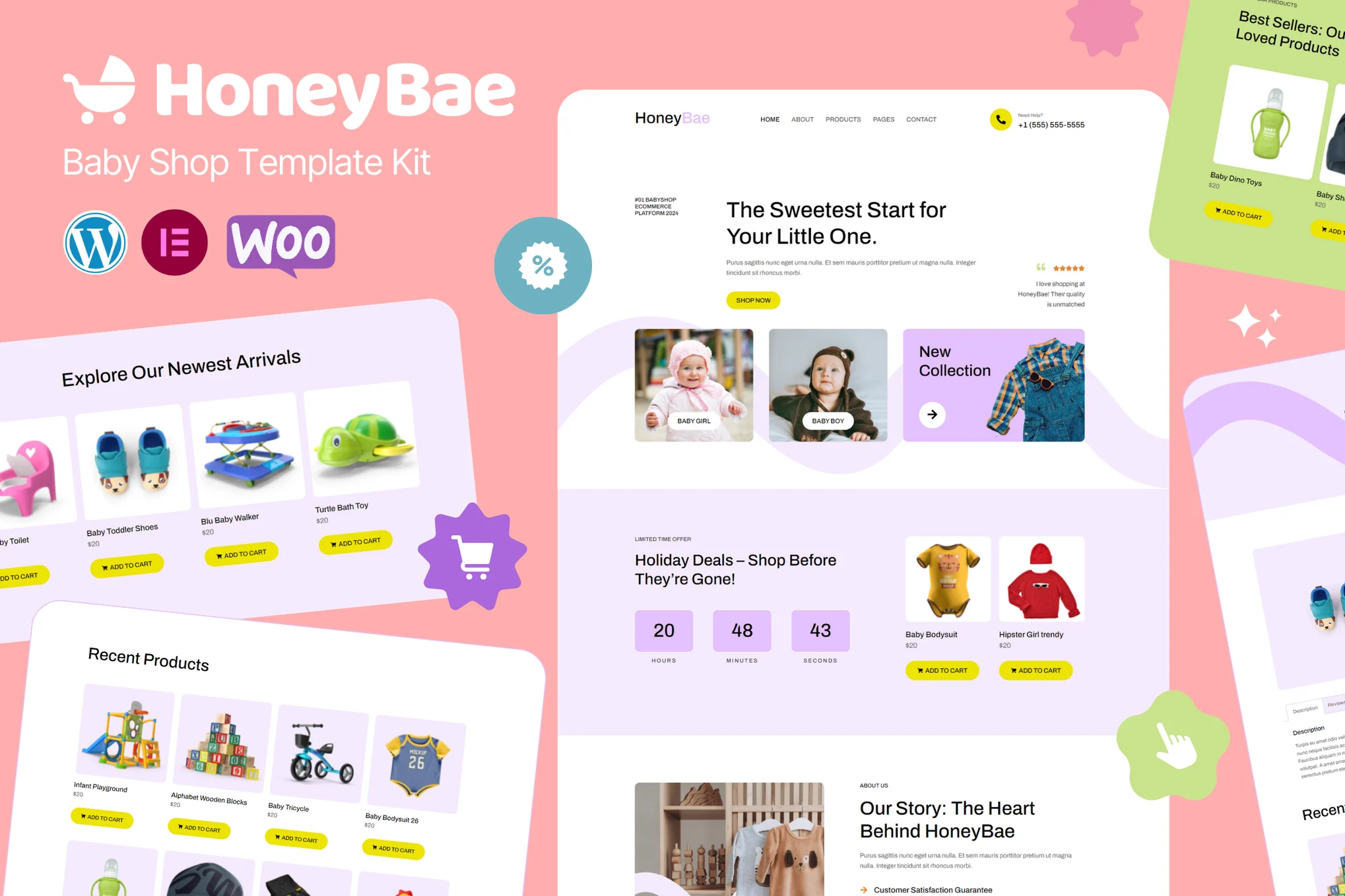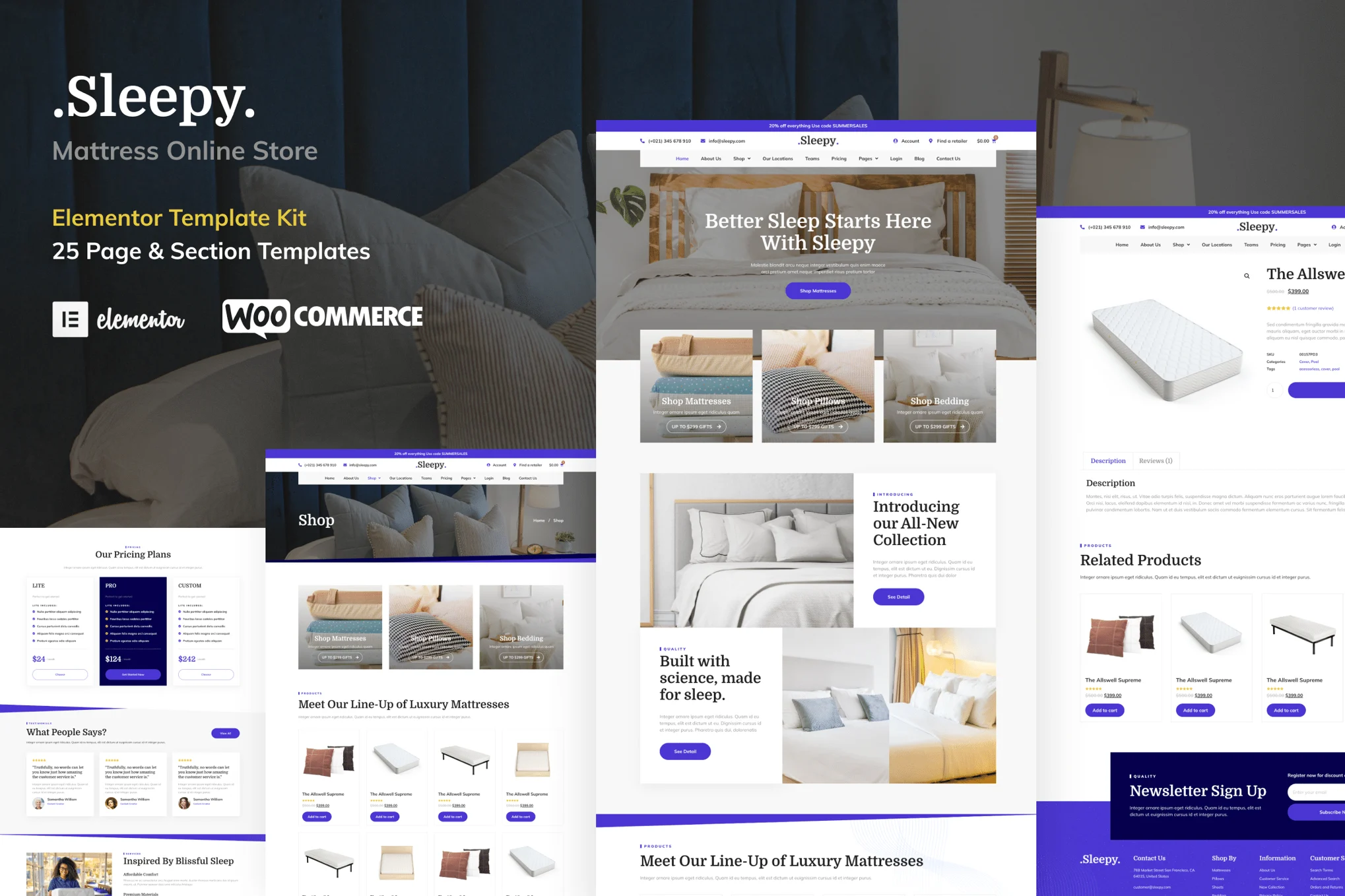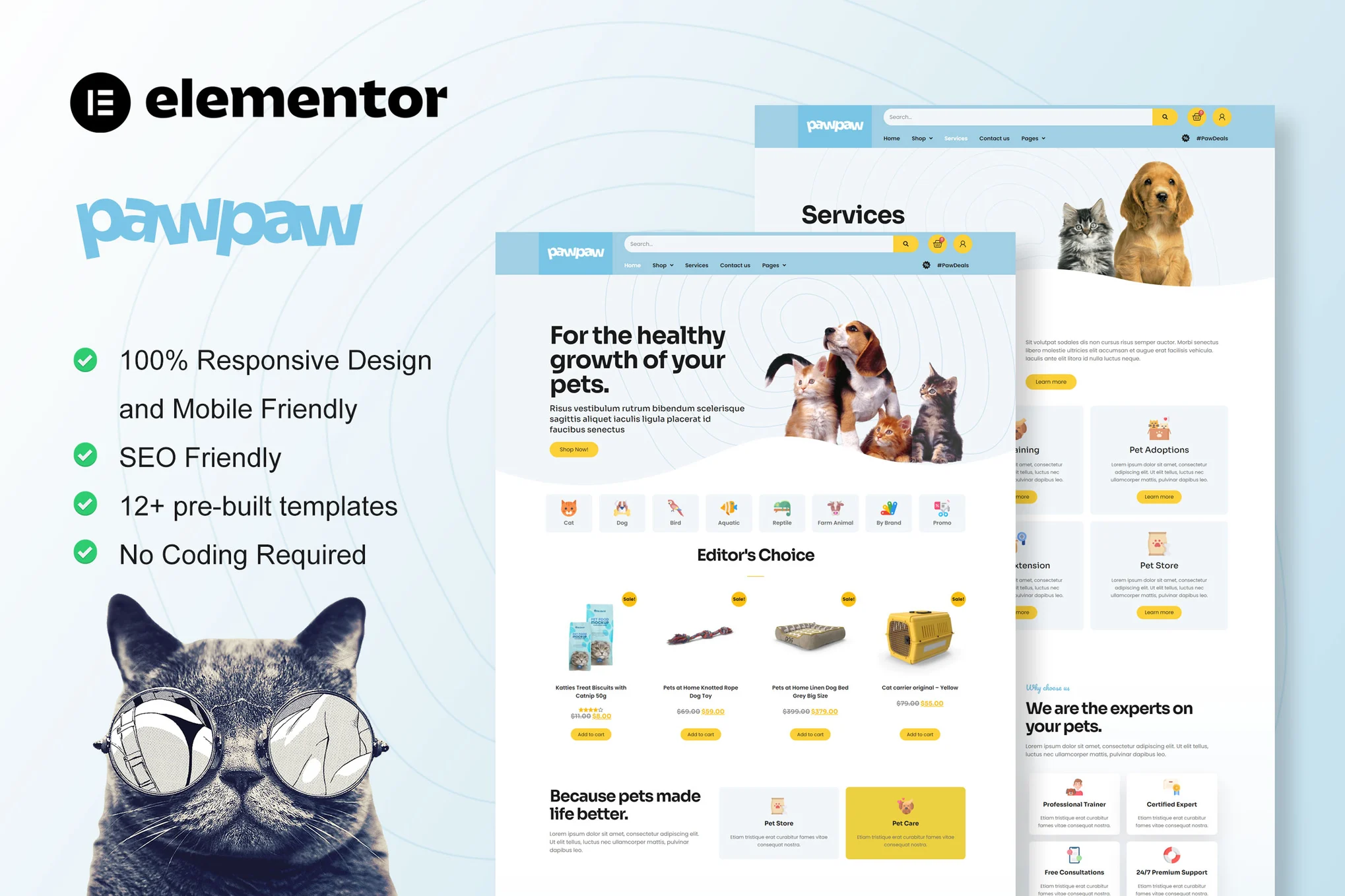Your e-commerce website usually involves high costs and a lot of manual work, such as regularly updating inventory or processing orders. While WooCommerce REST API Being able to help administrators manage the store more efficiently with code reduces these tasks.
With APIs, it's possible to automate processes, connect the store to other tools, and handle day-to-day tasks without having to do them manually. From updating product details to managing orders, theREST API This can be done easily with a simple HTTP request.
In this article, describe how toIntegration with WooCommerce REST APIIt also explains how to test it and how to use it to manage the product, as well as troubleshooting steps in case of problems.
![Image [1] - WooCommerce REST API: a complete guide to efficiently managing your e-commerce store](https://www.361sale.com/wp-content/uploads/2024/12/20241228155957874-image.png)
What is a REST API and how does it work?
A REST API is a way for software applications to communicate with each other over the Internet. Its full name is Representational State Transfer(expressive state transfer) and follow a set of guidelines that make integration simple and scalable.
When a client requests information from the server via the REST API, the server returns the current state of the requested resource in a standardized format.The REST API uses HTTP requests to perform standard database functions, such as making a CRUD(create, read, update, delete) operations.
together with SOAP compared to other technologies such asREST More popular because it uses less bandwidth and is better suited to the Internet environment.
We've also previously put together a post onREST APIFor more details on the article, seeWooCommerce REST API Manual: Comprehensive Explanation and Real-World Case StudiesThe
Advantages of using REST API in WooCommerce
There are many advantages to using the REST API in WooCommerce, including:
- Supports multi-platform interoperability: The REST API allows seamless communication between multiple platforms.
- Provides development flexibility: Developers have the flexibility to build applications as needed.
- Enables connectivity with different devices: Easily connects to a variety of devices through a REST API.
- Simplified data synchronization: The REST API makes data synchronization a breeze.
- Easy access to third-party content: Use the REST API for quick integration and access to third-party content.
Requirements for using the WooCommerce REST API
To use the WooCommerce REST API, meet these conditions:
- WooCommerce 3.5 and above
- WordPress 4.4 and above
- Enable fixed links(Path: Settings > Permanent link)
- Enable HTTPS for secure API access(Recommended)
- Testing the WooCommerce REST API with Postman or Insomnia
In this tutorial, the latest version of WooCommerce and WordPress will be used. make sure that the WordPress fixed links are human readable (path:Settings > Fixed Links). I will select "Article Title" option, but for better compatibility, you can choose to exclude "unadorned"Any format other than
Steps:
- leave for Dashboard → Settings → Fixed LinksThe
- Select "Article Title" option and click on the bottom "Save Changes"Button.
![Image [2] - WooCommerce REST API: a complete guide to efficiently managing your e-commerce store](https://www.361sale.com/wp-content/uploads/2024/12/20241228140122563-image.png)
How to integrate WooCommerce REST API?
An API is a tool that enables different software applications to communicate with each other. For example, software applications like PayPal Such a payment gateway connects to the e-commerce site through an API so that transactions are processed securely without the need to build the payment functionality themselves.
The WooCommerce REST API reads and writes data from the store, including orders, products, and customers. For example, if you run an online clothing store website, you can use the API to automatically update inventory when products sell out.
Using the WooCommerce API, follow the steps below:
Step 1: Set up and access the WooCommerce API
To use the WooCommerce API, you first need to have WooCommerce installed on your website. if you don't have a website, you can refer to our tutorial to create one:
Ultra-detailed babysitting tutorial for manually installing WordPress on Tencent Cloud using 1Panel
Once the WooCommerce site is ready, you need to generate an API key to authenticate the API request. The procedure is as follows:
- Go to the WooCommerce setup page and click the "Advanced" tab, and then select the "REST API"The
![Image [3] - WooCommerce REST API: a complete guide to efficiently managing your e-commerce store](https://www.361sale.com/wp-content/uploads/2024/12/20241228141015920-image.png)
- Here, keys can be generated for each user who needs API access.
![Image [4] - WooCommerce REST API: a complete guide to efficiently managing your e-commerce store](https://www.361sale.com/wp-content/uploads/2024/12/20241228141026193-image.png)
Next, it is necessary to select a API endpointsWooCommerce provides multiple endpoints to access different types of data, such as orders, products, customers, and more. Select the endpoint that corresponds to the data you want to access or modify.
Completed these steps so far:WooCommerce is installed, an API key is generated, and the correct endpoint is selected to access or modify data in the store.
Step 2: Create API Key in WooCommerce
In Step 1, we have set up WooCommerce and prepared the API environment. Now, in Step 2, the API key needs to be generated. This step is critical because the API key will be used to authenticate all requests for store data, whether it's to retrieve orders, update products, or manage customers.
The process of creating an API key in WooCommerce is very simple, a few steps:
- Log in to the WordPress dashboard.
- leave for WooCommerce → SettingsThe
![Image [5] - WooCommerce REST API: a complete guide to efficiently managing your e-commerce store](https://www.361sale.com/wp-content/uploads/2024/12/20241228143725228-image.png)
- click (using a mouse or other pointing device)"Advanced"tab, and then click"REST API"Tab.
![Image [6] - WooCommerce REST API: a complete guide to efficiently managing your e-commerce store](https://www.361sale.com/wp-content/uploads/2024/12/20241228143809821-image.png)
- click (using a mouse or other pointing device)Adding Keys/Creating API Keysbutton to create a new API key.
![Image [7] - WooCommerce REST API: a complete guide to efficiently managing your e-commerce store](https://www.361sale.com/wp-content/uploads/2024/12/20241228143831419-image.png)
exist descriptive Enter a description of the API key in the field.
surname Cong subscribers drop-down list to select the user you want to associate with this API key. If you do not see the user you want to use, you may need to create a new user first.
surname Cong scope of one's jurisdiction drop-down list to select the permissions to be given to this API key. The following permission types can be selected:
- Read/Write access (Read/Write)
- Read-only permissions (Read-only)
- Write-only permissions (Write-only)
![Image [8] - WooCommerce REST API: a complete guide to efficiently managing an e-commerce store](https://www.361sale.com/wp-content/uploads/2024/12/20241228144022150-image.png)
- click (using a mouse or other pointing device)Generating API Keysbutton to generate an API key.
![Image [9] - WooCommerce REST API: a complete guide to efficiently managing your e-commerce store](https://www.cloudways.com/blog/wp-content/uploads/Generate-API-Key-1.png)
Ensure that you will Consumer Key respond in singing Consumer Secret values are copied and saved in a safe place, as you will not be able to view them again.
![Image [10] - WooCommerce REST API: a complete guide to efficiently managing your e-commerce store](https://www.361sale.com/wp-content/uploads/2024/12/20241228144939469-image.png)
This successfully creates an API key in the WooCommerce store that allows you to programmatically access and manipulate the store's data.
Step 3: Test that the REST API in WooCommerce is working properly
Next, you need to test that the REST API is working properly. Follow the steps below to verify the functionality of the REST API endpoint:
Enabling older REST APIs
The first step is to enable the older REST API. prior to WooCommerce 9.0, this could be done by going to the Settings → Advancedto enable the old API option. However, it is now necessary to install a new API called WooCommerce Legacy REST API The dedicated extension plugin for the
Once the installation is complete, look at the old API options again and you'll see the "Older REST APIs are enabled" The check mark of the
![Image [11] - WooCommerce REST API: a complete guide to efficiently managing your e-commerce store](https://www.361sale.com/wp-content/uploads/2024/12/20241228145242684-image.png)
The next step is to test on the API platforms. The REST API will be tested on two API testbeds:Postmanrespond in singingInsomniaThe
Testing the WooCommerce REST API in Postman
Postman is a platform for building and using APIs. To test APIs in Postman, you first need to register an account.
The request URL we will test is wp-json/wc/v3/orders. In my site, the full URL is similar:https://woocommerce-1146547-3986789.cloudwaysapps.com/wp-json/wc/v3/ordersThe URL of your website. You need to change it to the URL of your own website.
After successfully logging in to Postman, follow the steps below to perform REST API testing:
- Open a new tab and visit WooCommerce REST API documentation.
- Open Postman in another tab of your browser.
- Go to the WooCommerce REST API documentation and search for the Orders(Order).
- Copy the code from the right panel of the document.
- Refer to the screenshot below to proceed.
![Image [12] - WooCommerce REST API: a complete guide to efficiently managing your e-commerce store](https://www.361sale.com/wp-content/uploads/2024/12/20241228145807508-image.png)
To make it easier to follow along with this tutorial, here is the code that needs to be copied:
curl -X POST https://example.com/wp-json/wc/v3/orders \-u consumer_key:consumer_secret \-H "Content-Type: application/json" \-d '{"payment_method": "bacs","payment_method_title": "Direct Bank Transfer","set_payment": true,"billing": {"address_1": "969 Market","address_2": "", "city": "San Francisco"."state": "CA", "postcode": "9410"email": "john.doe@example.com", "email": "john.doe@example.com", "phone":"(555)"phone": "(555) 555-5555"},"shipping": {"first_name": "John", "last_name": "John", "last_name": {"last_name": "Doe", "address_1": "969 Market": "Doe", "address_2": "Doe"."address_1": "969 Market", "address_2": ""."state": "CA", "postcode": "9410"postcode": "94103", "country": "US"."country": "US"}, "line_items"."line_items": [{"product_id": 93, "quantity": 2"quantity": 2}, { "line_items": [ "product_id": 93, "quantity": 2{"product_id": 22, "variation_id": 23, {"variation_id": 23, "quantity": 1"quantity": 1}], "shipping_lines": [ "product_id": 22 "variation_id": 23 "quantity": 1 }"shipping_lines": [{"method_id": "flat_rate", "method_title": "Flat Rate", "method_title": "Flat Rate", "shipping_lines": [ {"method_title": "Flat Rate","total": "10.00"}]}'curl -X POST https://example.com/wp-json/wc/v3/orders \ -u consumer_key:consumer_secret \ -H "Content-Type: application/json" \ -d '{ "payment_method": "bacs", "payment_method_title": "Direct Bank Transfer", "set_payment": true, "billing": { "address_1": "969 Market", "address_2": "", "city": "San Francisco". "state": "CA", "postcode": "9410 "email": "john.doe@example.com", "email": "john.doe@example.com", "phone":"(555) "phone": "(555) 555-5555" }, "shipping": { "first_name": "John", "last_name": "John", "last_name": { "last_name": "Doe", "address_1": "969 Market": "Doe", "address_2": "Doe". "address_1": "969 Market", "address_2": "". "state": "CA", "postcode": "9410 "postcode": "94103", "country": "US". "country": "US" }, "line_items". "line_items": [ { "product_id": 93, "quantity": 2 "quantity": 2 }, { "line_items": [ "product_id": 93, "quantity": 2 { "product_id": 22, "variation_id": 23, { "variation_id": 23, "quantity": 1 "quantity": 1 } ], "shipping_lines": [ "product_id": 22 "variation_id": 23 "quantity": 1 } "shipping_lines": [ { "method_id": "flat_rate", "method_title": "Flat Rate", "method_title": "Flat Rate", "shipping_lines": [ { "method_title": "Flat Rate", "total": "10.00" } ] }'curl -X POST https://example.com/wp-json/wc/v3/orders \ -u consumer_key:consumer_secret \ -H "Content-Type: application/json" \ -d '{ "payment_method": "bacs", "payment_method_title": "Direct Bank Transfer", "set_payment": true, "billing": { "address_1": "969 Market", "address_2": "", "city": "San Francisco". "state": "CA", "postcode": "9410 "email": "john.doe@example.com", "email": "john.doe@example.com", "phone":"(555) "phone": "(555) 555-5555" }, "shipping": { "first_name": "John", "last_name": "John", "last_name": { "last_name": "Doe", "address_1": "969 Market": "Doe", "address_2": "Doe". "address_1": "969 Market", "address_2": "". "state": "CA", "postcode": "9410 "postcode": "94103", "country": "US". "country": "US" }, "line_items". "line_items": [ { "product_id": 93, "quantity": 2 "quantity": 2 }, { "line_items": [ "product_id": 93, "quantity": 2 { "product_id": 22, "variation_id": 23, { "variation_id": 23, "quantity": 1 "quantity": 1 } ], "shipping_lines": [ "product_id": 22 "variation_id": 23 "quantity": 1 } "shipping_lines": [ { "method_id": "flat_rate", "method_title": "Flat Rate", "method_title": "Flat Rate", "shipping_lines": [ { "method_title": "Flat Rate", "total": "10.00" } ] }'
- After copying the code, it returnsPostmanTab.
- click (using a mouse or other pointing device)"Favorites"And thenClick "Import"The
![Image [13] - WooCommerce REST API: a complete guide to efficiently managing your e-commerce store](https://www.361sale.com/wp-content/uploads/2024/12/20241228145954332-image.png)
- Paste fromWooCommerce REST APIDocument the copied order code, and then click"Import to collection"Button.
![Image [14] - WooCommerce REST API: a complete guide to efficiently managing your e-commerce store](https://www.361sale.com/wp-content/uploads/2024/12/20241228150017121-image.png)
- optionType of requestbecause ofGETThe
![Image [15] - WooCommerce REST API: a complete guide to efficiently managing your e-commerce store](https://www.cloudways.com/blog/wp-content/uploads/Request-Type-as-GET.png)
- compilerRequest URLUse your own site URL.
![Image [16] - WooCommerce REST API: a complete guide to efficiently managing your e-commerce store](https://www.cloudways.com/blog/wp-content/uploads/Request-URL.png)
- Choose NowAuth Type. For this reason, the choice ofBasic AuthThe
- user IDrespond in singingcryptographicfield in WooCommerce.consumer keyrespond in singingconsumersKey. If memory serves, this is the key that is used in step 2 What is saved at the end. Finally, click "dispatch"buttonsThe
![Image [17] - WooCommerce REST API: a complete guide to efficiently managing your e-commerce store](https://www.cloudways.com/blog/wp-content/uploads/Consumer-key.png)
- If the WooCommerce store has been set up correctly with the REST API enabled and the API key generated, you should see an JSON Response, which contains a list of products in the store. The response should look like the following:
![Image [18] - WooCommerce REST API: a complete guide to efficiently managing your e-commerce store](https://www.cloudways.com/blog/wp-content/uploads/JSON-response.png)
Testing the WooCommerce REST API on Insomnia
The second platform used to test the REST API isInsomniaTo do this, you first need to install Insomnia on your system. To do this, you first need to install Insomnia on your system. after installation, follow the steps below to perform the REST API test.
- click (using a mouse or other pointing device)"New Collections"The
![Image [19] - WooCommerce REST API: a complete guide to efficiently managing your e-commerce store](https://www.cloudways.com/blog/wp-content/uploads/Test-WooCommerce-REST-API.png)
- For your collection.christenThe
![Image [20] - WooCommerce REST API: a complete guide to efficiently managing your e-commerce store](https://www.cloudways.com/blog/wp-content/uploads/Create-New-Request.png)
- click (using a mouse or other pointing device)"New HTTP request"The
![Image [21] - WooCommerce REST API: a complete guide to efficiently managing your e-commerce store](https://www.cloudways.com/blog/wp-content/uploads/New-HTTP-Request.png)
- optionType of requestbecause ofGETThe
![Image [22] - WooCommerce REST API: a complete guide to efficiently managing your e-commerce store](https://www.cloudways.com/blog/wp-content/uploads/GET-1.png)
- compilerRequest URLto use your own site URL.
![Image [23] - WooCommerce REST API: a complete guide to efficiently managing your e-commerce store](https://www.cloudways.com/blog/wp-content/uploads/Request-URL-2.png)
- For authorization, selectBasic Authorization.
![Image [24] - WooCommerce REST API: a complete guide to efficiently managing your e-commerce store](https://www.cloudways.com/blog/wp-content/uploads/choose-Basic-Auth.png)
- user IDrespond in singingcryptographicfield from WooCommerce.consumer keyrespond in singingconsumersKey.
![Image [25] - WooCommerce REST API: a complete guide to efficiently managing your e-commerce store](https://www.cloudways.com/blog/wp-content/uploads/Consumer-Details.png)
- strike (on the keyboard)dispatchbutton. In theView in the right panelJSON formatThe results of the
![Image [26] - WooCommerce REST API: a complete guide to efficiently managing your e-commerce store](https://www.cloudways.com/blog/wp-content/uploads/JSON-format.png)
If you receive a response similar to this, congratulations! The REST API is working properly.
If you encounter an error, double-check the API credentials and that the REST API is properly enabled in WooCommerce.
How does the WooCommerce REST API work?
The WooCommerce REST API is based on the principles of REST (Representational State Transfer) and can interact with store data such as orders, products and customers using standard HTTP methods:
- GET: Retrieve data (e.g. get a list of orders)
- POST: Create new data (e.g. add a new product)
- PUT: update existing data (e.g. change order status)
- DELETE: Delete data (e.g. delete customers)
Each interaction is done through thestarting point or ending point (in stories etc)done, these endpoints are structured URLs that represent specific resources. for example, to retrieve an order, you can use the endpoint /wp-json/wc/v3/orders/{order_id}. These endpoints are based on a resource structure, meaning that each URL represents a specific type of data in the system.
The API uses stateless communication, meaning that each request from the client to the server must contain all the information the server needs to fulfill that request.
The data is usually presented as JSON The format is exchanged, which makes it easy to handle data in web applications. Each API request must be authenticated, usually using an API key (which can be generated in WooCommerce) or another method (such as the OAuth).
The API supports a variety of testing and integration tools, such as Postman respond in singing InsomniaThey make it easy to send requests and view responses.
For most users, integrating with an external service is very simple and usually involves just generating an API key and sharing it with the external service to establish a connection. Once the connection is made, the external service can interact with the WooCommerce store using the provided API.
How to manage products (add/edit/delete) via the REST API
In the previous section, the WooCommerce REST API was tested using Postman and Insomnia, and now it can be used to manage products in the store.
WooCommerce Usage Product Objects to manage the products in the store. These objects contain a variety of attributes, such as price(Price),stock_status(inventory status) and grouped_products(grouping products). These attributes make it easy for administrators to control things like inventory, pricing, and product categorization through the API.
For example, to assign a product to a group, simply use the group's ID with the grouped_products attribute is sufficient.
There are two key attributes when managing inventory:
1. manage_stock: Set to true maybe false, enable or disable inventory management.
2. stock_status: Used to reflect the current state of the product, optional values include:
- instock(in stock)
- onbackorder(Reservations accepted)
- outofstock(not in stock)
Next, we learn how to add or update product details programmatically.
Add Products via WooCommerce API
To add products to our store with Postman, you need to change the request method from the GET switch to POSTand change the endpoint URL to:
https://woocommerce-1146547-3986789.cloudwaysapps.com/wp-json/wc/v3/products
Operational Steps:
- Go to Postman's Body tabThe
- option Raw option and set the format to JSONThe
- Replace the existing code with the following JSON data:
{
"name": "Macbook Pro M3",
"type": "simple", "description": "The M3 chip features 8 CPU cores, 10 GPU cores, and a 16-core neural engine for enhanced performance.
"description": "The M3 chip features 8 CPU cores, 10 GPU cores, and a 16-core neural engine for enhanced performance.",
"categories": [],
"tags": [],
"images": []
}![Image [27] - WooCommerce REST API: a complete guide to efficiently managing your eCommerce store](https://www.361sale.com/wp-content/uploads/2024/12/20241228152836162-image.png)
This JSON contains detailed information about the product, for exampleName, type, descriptionand optionalfieldas ifCategories, Tagsrespond in singingphotographThe
After entering the data, click dispatch button. If the product is successfully created, a response containing the product object is received.
![Image [28] - WooCommerce REST API: a complete guide to efficiently managing your e-commerce store](https://www.361sale.com/wp-content/uploads/2024/12/20241228153029846-image.png)
This is a product added to the store:
![Image [29] - WooCommerce REST API: a complete guide to efficiently managing your e-commerce store](https://www.361sale.com/wp-content/uploads/2024/12/20241228153047623-image.png)
Editing Products via the WooCommerce API
Suppose you're not happy with a previously added product and want to edit it - you can do that with the WooCommerce API as well. All you need to know is that the previously added product to the store has a ID. In my case, the product id be 28The
In this tutorial, we change the name of the product we added earlier. The procedure is as follows:
Modify the JSON data, like this:
{"name": "Macbook Air M3"}{ "name": "Macbook Air M3" }{ "name": "Macbook Air M3" }
Note: We have not included other attributes as we just want to change the product name. And since we don't need to add a new product, just modify an existing one, we change the endpoint URL to:
https://woocommerce-1146547-3986789.cloudwaysapps.com/wp-json/wc/v3/products<your-id-here>The
In the example, the product's ID is 28, so the URL is:
https://woocommerce-1146547-3986789.cloudwaysapps.com/wp-json/wc/v3/products/28The
Next, change the request method to PUT, and run the request. You can confirm that the update was successful by checking the updated product name in the store.
![Image [30] - WooCommerce REST API: a complete guide to efficiently managing your e-commerce store](https://www.361sale.com/wp-content/uploads/2024/12/20241228153413553-image.png)
![Image [31] - WooCommerce REST API: a complete guide to efficiently managing your e-commerce store](https://www.361sale.com/wp-content/uploads/2024/12/20241228153423154-image.png)
This is the name of the updated product in our store:
![Image [32]-WooCommerce REST API: a complete guide to efficiently managing your e-commerce store](https://www.361sale.com/wp-content/uploads/2024/12/20241228153440528-image.png)
Delete Products via WooCommerce API
To remove the product, we use DELETE Request Method. Will delete the previously updated in the store Macbook Air M3 - Updated Product. The procedure is as follows:
Use the same endpoint URL as before, but change the request type to DELETEThe
Enter the ID of the product in the endpoint URL and click the dispatchThe
![Image [33] - WooCommerce REST API: a complete guide to efficiently managing your e-commerce store](https://www.361sale.com/wp-content/uploads/2024/12/20241228153553138-image.png)
The product will be removed from the store as shown below:
![Image [34] - WooCommerce REST API: a complete guide to efficiently managing your e-commerce store](https://www.361sale.com/wp-content/uploads/2024/12/20241228153635628-image.png)
How to manage orders via REST API (get/update order status)
The WooCommerce REST API simplifies order processing by automating tasks such as fetching and updating order status. It can be easily:
- Get orders and filter them by date, status or customer.
- Update the order status to reflect the different stages, e.g. "Completed".
- Manage refunds, including processing requests and automating refunds.
Next, see how to get the most recent order and update the order status to "done".
Get Order
In this example, we'll get the most recent order and update its status to "done". To get the most recent orders, a date range is needed and the GET Request.
Here's how I use Postman to get recent orders:
- First, update the endpoint URL to
https:///wp-json/wc/v3/orders. The URL looks like this:https://woocommerce-1146547-3986789.cloudwaysapps.com/wp-json/wc/v3/orders - Next, since I need to get the most recent order ID, I will provide a date range and use the after parameter only gets orders after today. In my example, the date range
2024-09-08t00:00:00The URL looks like this. My URL looks like this:https://woocommerce-1146547-3986789.cloudwaysapps.com/wp-json/wc/v3/orders?after=2024-09-08T00:00:00
![Image [35] - WooCommerce REST API: a complete guide to efficiently managing your e-commerce store](https://www.361sale.com/wp-content/uploads/2024/12/20241228154002624-image.png)
After changing the URL, go to Params tab, and in the Value The date is added to the field as shown below:
![Image [36] - WooCommerce REST API: a complete guide to efficiently managing your e-commerce store](https://www.361sale.com/wp-content/uploads/2024/12/20241228154035215-image.png)
After running the request, you can see a list of the store's recent orders that match the date conditions provided.
![Image [37] - WooCommerce REST API: a complete guide to efficiently managing your e-commerce store](https://www.361sale.com/wp-content/uploads/2024/12/20241228154137865-image.png)
In my example, the order ID is "id": 25The state is "pending". We changed it to "completed"Okay?
Update Order Status
To update the order status, we use the PUT Request method. The endpoint URL will also need to be modified to include the specific order ID. in this example, the order ID is 25, so the URL will be:
https://woocommerce-1146547-3986789.cloudwaysapps.com/wp-json/wc/v3/orders/25
Next, head to Body tab and add the following JSON data:
{"status": "completed"}{ "status": "completed" }{ "status": "completed" }
![Image [38] - WooCommerce REST API: a complete guide to efficiently managing your e-commerce store](https://www.361sale.com/wp-content/uploads/2024/12/20241228154339740-image.png)
Running this request will update the order status to done, as shown below:
![Image [39] - WooCommerce REST API: a complete guide to efficiently managing your e-commerce store](https://www.361sale.com/wp-content/uploads/2024/12/20241228154421607-image.png)
How to manage clients via REST API (add/retrieve client ID)
Customer management and interaction is made easier with the WooCommerce REST API.
Businesses can:
- Create and update customer profiles.
- Retrieve customer information such as purchase history and preference settings.
- Use this data to personalize marketing, send targeted promotions and recommend products.
This helps businesses better engage with their customers and drive repeat purchases.
Add Client
To add a client, use the POST request method and change the endpoint URL to:https://woocommerce-1146547-3986789.cloudwaysapps.com/wp-json/wc/v3/customers
Next, in the Body tab, use the following JSON to create a new customer:
{"email": "a.rehman@gmail.com","first_name": "Abdul","billing": {"first_name": "abdul","last_name": "Rehman", "company": "", "company": "abdul.rehman", "customer"."company": "", "address_1": "123"."address_1": "123 Main Street", "address_2": "", "address_2": "123 Main Street"."address_2": "", "city": "Lahore"."city": "Lahore", "state": "Punjab"."state": "Punjab", "postcode": "54000"."postcode": "54000","country": "PK", "email":"", "postcode": "54000", "country": "PK", "email"."email": "a.rehman@gmail.com","phone": "(555) 555-5555"}, "shipping"."shipping": {"first_name": "Abdul", "last_name": "Abdul", "last_name": {"last_name": "Rehman", "company": "," "company": "(555)"company": "", "address_1": "123"."address_1": "123 Main Street", "address_2": ","address_2": "", "city": "Lahore"."city": "Lahore", "state": "Punjab"."state": "Punjab", "postcode": "54000"."postcode": "54000","country": "PK"}}{ "email": "a.rehman@gmail.com", "first_name": "Abdul", "billing": { "first_name": "abdul", "last_name": "Rehman", "company": "", "company": "abdul.rehman", "customer". "company": "", "address_1": "123". "address_1": "123 Main Street", "address_2": "", "address_2": "123 Main Street". "address_2": "", "city": "Lahore". "city": "Lahore", "state": "Punjab". "state": "Punjab", "postcode": "54000". "postcode": "54000", "country": "PK", "email":"", "postcode": "54000", "country": "PK", "email". "email": "a.rehman@gmail.com", "phone": "(555) 555-5555" }, "shipping". "shipping": { "first_name": "Abdul", "last_name": "Abdul", "last_name": { "last_name": "Rehman", "company": "," "company": "(555) "company": "", "address_1": "123". "address_1": "123 Main Street", "address_2": ", "address_2": "", "city": "Lahore". "city": "Lahore", "state": "Punjab". "state": "Punjab", "postcode": "54000". "postcode": "54000", "country": "PK" } }{ "email": "a.rehman@gmail.com", "first_name": "Abdul", "billing": { "first_name": "abdul", "last_name": "Rehman", "company": "", "company": "abdul.rehman", "customer". "company": "", "address_1": "123". "address_1": "123 Main Street", "address_2": "", "address_2": "123 Main Street". "address_2": "", "city": "Lahore". "city": "Lahore", "state": "Punjab". "state": "Punjab", "postcode": "54000". "postcode": "54000", "country": "PK", "email":"", "postcode": "54000", "country": "PK", "email". "email": "a.rehman@gmail.com", "phone": "(555) 555-5555" }, "shipping". "shipping": { "first_name": "Abdul", "last_name": "Abdul", "last_name": { "last_name": "Rehman", "company": "," "company": "(555) "company": "", "address_1": "123". "address_1": "123 Main Street", "address_2": ", "address_2": "", "city": "Lahore". "city": "Lahore", "state": "Punjab". "state": "Punjab", "postcode": "54000". "postcode": "54000", "country": "PK" } }
After running the request, you will receive a response with the customer's details. Be sure to record theCustomer ID, because it is needed in the next section to retrieve the details of that customer.
![Image [40] - WooCommerce REST API: a complete guide to efficiently managing your e-commerce store](https://www.361sale.com/wp-content/uploads/2024/12/20241228155016739-image.png)
As you can see, new customer information is added with a customer ID of"id": 2The
Retrieve customer information by ID
Now, let's use the GET request method to retrieve customer information based on the previously created customer ID. In my example, the customer ID is "2"The
Add the client ID to the endpoint URL in the following format:https:///wp-json/wc/v3/customers/
My endpoint URL is below:https://woocommerce-1146547-3986789.cloudwaysapps.com/wp-json/wc/v3/customers/2
After running the request, you can see the details of this customer as shown below:
![Image [41] - WooCommerce REST API: a complete guide to efficiently managing your e-commerce store](https://www.361sale.com/wp-content/uploads/2024/12/20241228155139420-image.png)
WooCommerce REST API Available Endpoints
The WooCommerce REST API provides access to different parts of the store through endpoints. An endpoint is a specific URL that performs various store functions. /wp-json/wc/v3/products endpoints to retrieve, create, or update products in the store.
Below is a list of the key endpoints, along with the corresponding PHP example code snippets:
| starting point or ending point (in stories etc) | functionality | sample code (computing) |
|---|---|---|
| Products (/wp-json/wc/v3/products) | Create, edit, delete and retrieve product information. | GET https://woocommerce-1146547-3986789.cloudwaysapps.com/wp-json/wc/v3/products |
| Orders (/wp-json/wc/v3/orders) | Access and manage order details (processing, fulfillment, refunds). | GET https://woocommerce-1146547-3986789.cloudwaysapps.com/wp-json/wc/v3/orders |
| Customers (/wp-json/wc/v3/customers) | Create, edit and retrieve customer information. | POST https://woocommerce-1146547-3986789.cloudwaysapps.com/wp-json/wc/v3/customers |
| Coupons (/wp-json/wc/v3/coupons) | Create, manage and track discount coupons. | POST https://woocommerce-1146547-3986789.cloudwaysapps.com/wp-json/wc/v3/coupons |
| Taxes (/wp-json/wc/v3/taxes) | Configure and manage tax rate settings, including adding new rates. | GET https://woocommerce-1146547-3986789.cloudwaysapps.com/wp-json/wc/v3/taxes |
| Statuses (/wp-json/wc/v3/statuses) | Access and manage order and product status. | GET https://woocommerce-1146547-3986789.cloudwaysapps.com/wp-json/wc/v3/statuses/order |
summarize
Overall, the WooCommerce REST API is a great tool for users looking to enhance their online business. It can connect stores to other applications and automate workflows, thus saving time and effort by optimizing processes.
Link to this article:https://www.361sale.com/en/32123
The article is copyrighted and must be reproduced with attribution.
































No comments